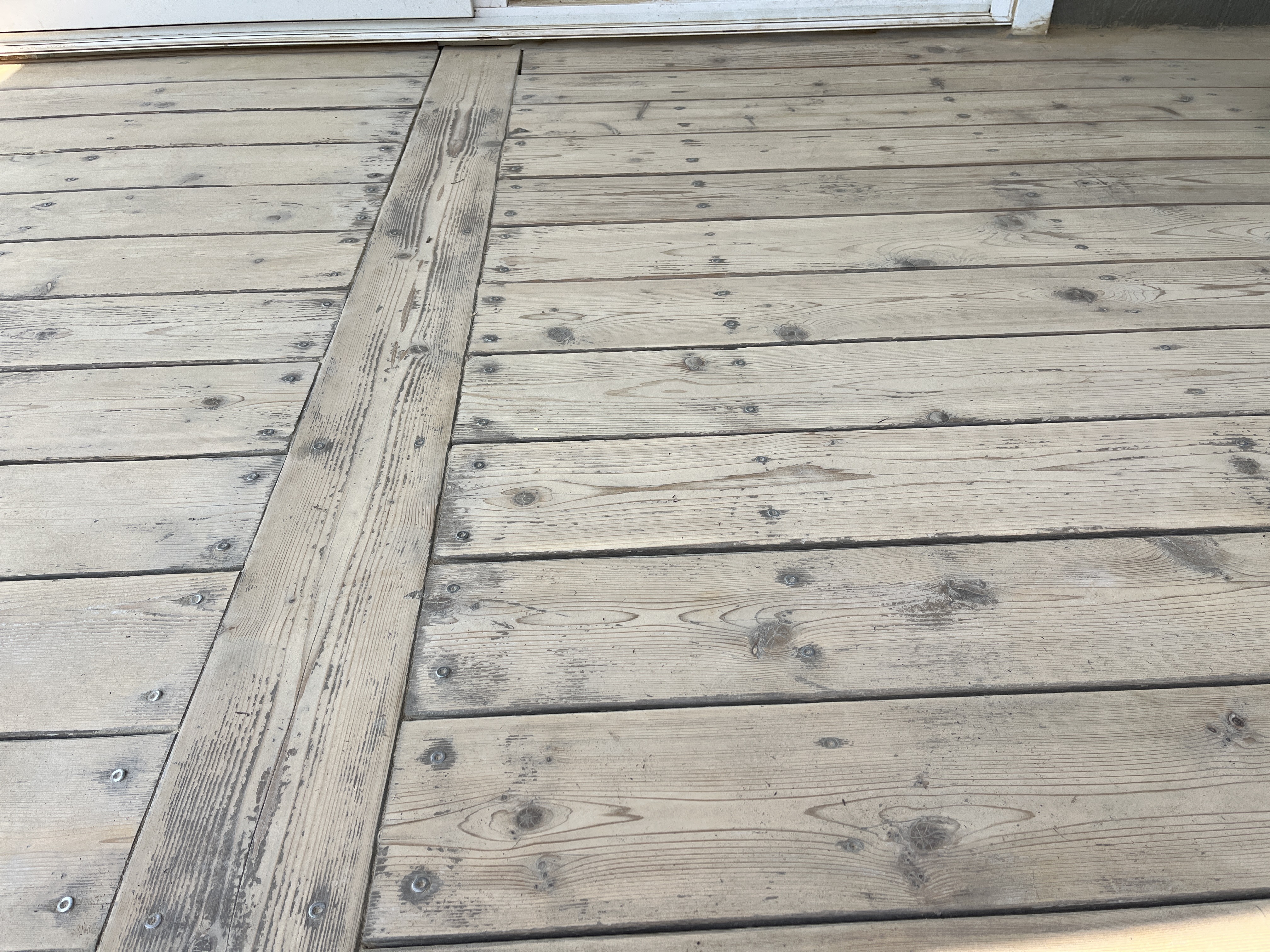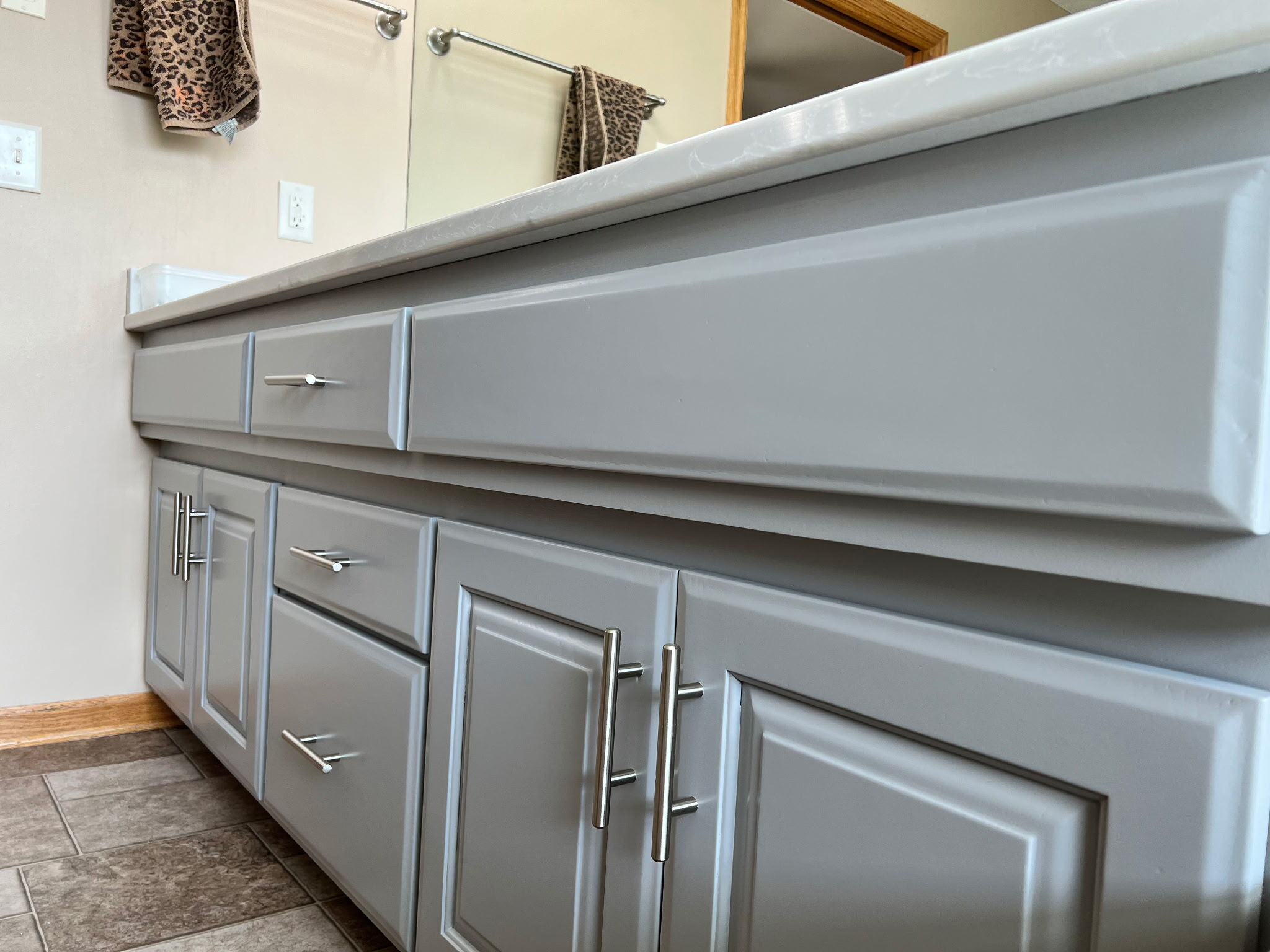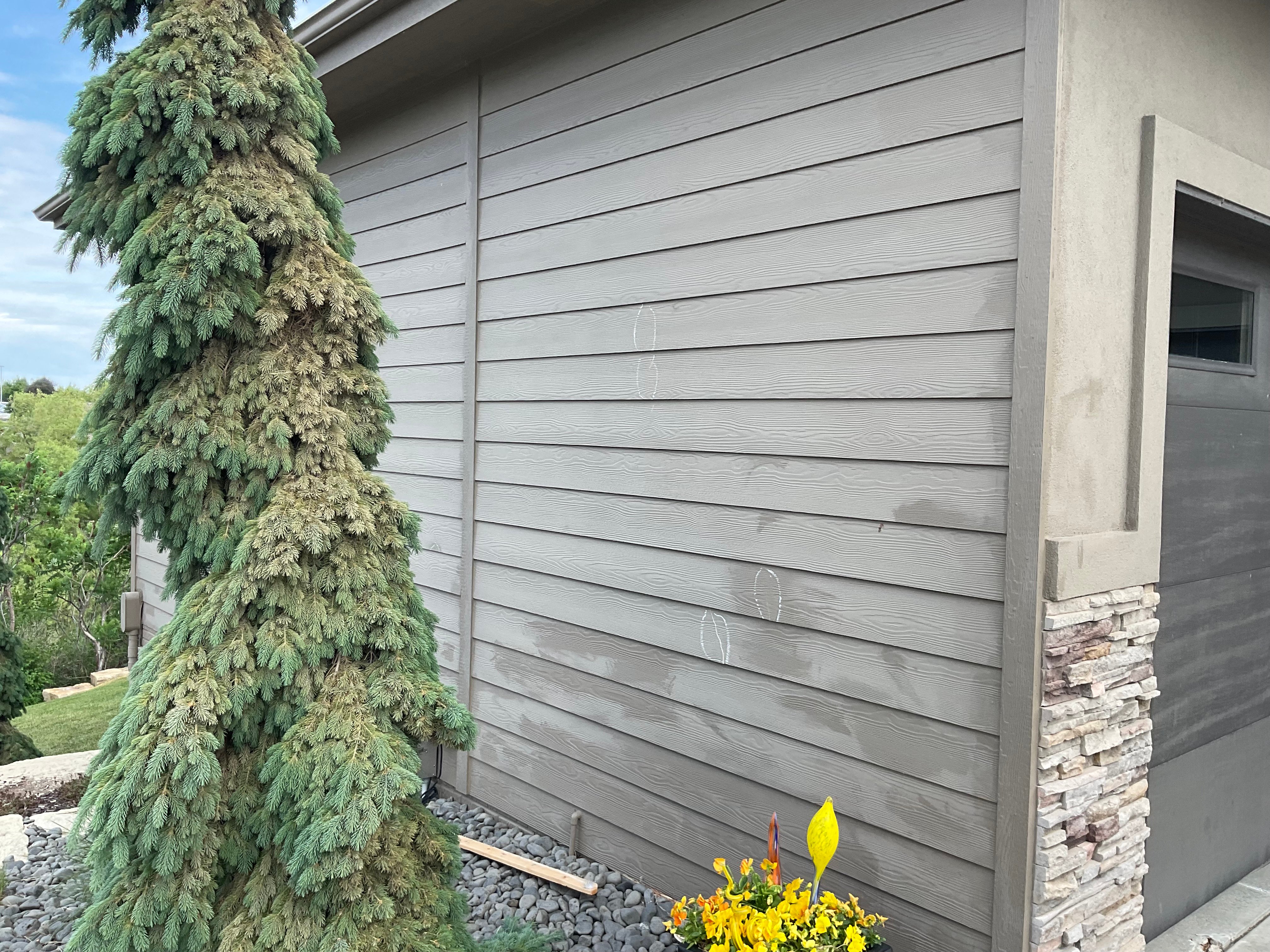Should You Sand a Deck Before Staining?
May 31st, 2024
5 min read

Is your deck looking worn out, faded, or splintered? Are you frustrated with how quickly your last stain job started to peel or wear off? As a homeowner, maintaining the beauty and longevity of your deck can feel like an endless battle. You might be wondering if there's a better way to ensure that your deck stays looking fresh and inviting for longer.
At Brush & Roll Painting, we understand the challenges that come with deck maintenance. With years of experience in deck restoration and painting, we've seen firsthand how proper preparation can make a world of difference in the longevity and appearance of a deck.
One critical step that many companies overlook is sanding the deck before restaining. This often-ignored step can dramatically improve the results of your staining project, ensuring that your deck looks beautiful and lasts longer.
In this article, we'll explain why sanding your deck before re-staining is so important, detail the steps involved, and provide you with the reasons why you might not have heard of some painters sanding a deck. By the end of this article, you'll understand the benefits of sanding, how to do it correctly, and how it can help you achieve a stunning, long-lasting finish for your deck.
Importance of Deck Sanding Before Staining

Many homeowners and even some professional painting companies skip the deck sanding step when re-staining a deck. However, sanding the deck is crucial for several reasons:
- Improves Adhesion: Sanding roughens the surface of the wood, allowing the new stain to embed deeper and adhere better. This leads to a more durable and longer-lasting finish.
- Removes Sun Damage: Sanding your deck helps get rid of the first layer of damage from the sun. If you take a magnifying glass to the surface of a sun-damaged deck, it would look like fur. Once that is removed, your deck surface will allow the stain to penetrate the wood better and be applied more consistently.
- Removes Imperfections: Sanding helps remove old stain as much as possible, dirt, and other debris that can prevent the new stain from adhering properly. It also smooths out any rough spots or splinters, making the deck safer and more comfortable to walk on top of.
- Long Lasting: A smooth, sanded surface will accept the stain more evenly, resulting in a longer-lasting and attractive finish. It also brings out the natural beauty of the wood grain.
How Long Does Wooden Deck Sanding Take?
The time it takes to sand a wood deck depends on several factors, including the deck's size, the wood's condition, and the type of sander you use.
On average, a medium-sized deck (about 300 square feet) can take anywhere from a few hours to a full day to sand properly. Here are some factors that can influence the time required:
- Deck Size: Larger decks will naturally take longer to sand. A small deck might only take a couple of hours, while a larger deck could take a few days.
- Wood Condition: If your deck has many layers of old stain or significant wear and tear, it will take longer to sand. You'll need to spend extra time removing old finishes and smoothing out rough areas.
- Equipment: Using a power sander can significantly reduce the time required compared to sanding by hand. Orbital sanders and belt sanders are common choices for deck sanding.
- Manpower: The number of people working on the deck will impact how long it takes. If you hire a painting company, they likely have more than one person working on a project, shortening the timeline of the project. If you are DIY-staining your deck or hiring a solo contractor, it will take longer.
How to Sand A Deck

Step 1. Preparation: Start by cleaning your deck thoroughly. Remove any furniture, plants, or other items from the deck surface. Then the deck should be power-washed with a deck cleaner/detergent to remove any remaining grime. The deck should be dried completely before any sanding begins.
Step 2. Safety First: It’s important your painter wears protective gear, including safety glasses, a dust mask, and hearing protection. Some sanders come with a vacuum attachment to eliminate the dust. If not, sanding can create a lot of dust, and they should protect their eyes, lungs, and ears.
Step 3. Sand the Deck Boards: A power sander should be used to sand the deck boards. The sander should be moved in the direction of the wood grain to avoid scratching the surface. It’s important to be thorough but careful not to gouge the wood.
Step 4. Edges and Corners: For areas that are difficult to reach with a power sander, such as edges and corners, use a handheld sanding block or sandpaper. Take your time to ensure all areas are evenly sanded.
Step 5. Clean Up: After sanding, painters can sweep the deck again to remove dust and debris. They may also want to use a leaf blower or a vacuum to ensure the surface is completely clean.
Step 6. Inspect The Deck Sanding: Next, a painter should check the deck for any missed spots or rough areas. If necessary, they should go back and sand these areas again until the entire surface is smooth and even.
Why Some Painters Sand Decks and Others Do Not

When it comes to deck staining, not all painting companies follow the same procedures. Some companies prioritize sanding the deck before staining, while others skip this step.
Why do some painters sand decks?
- Attention to Detail: Companies that sand the deck before staining understand the importance of preparation. They know that sanding creates a better surface for the stain to adhere to, which leads to a more durable and long-lasting finish.
- Commitment to Quality: These companies are often committed to delivering high-quality results. They take the extra time to sand the deck, knowing that it will enhance the final appearance and longevity of the stain.
- Customer Satisfaction: By ensuring a smooth and even surface, companies that sand can provide a more aesthetically pleasing result. This attention to detail often leads to higher customer satisfaction and fewer callbacks for touch-ups or repairs.
Why do some companies not sand decks?
- Time Constraints: Sanding a deck can be time-consuming, and some companies may skip this step to save time and increase the number of jobs they can complete. However, this can compromise the quality of the work. It also means that you could be paying a higher price for the amount of work being done on your deck. On the other hand, you could pay a little higher for a team that will take their time and take the right steps.
- Cost Considerations: Sanding requires additional labor and equipment, which can increase the cost of the project. Some companies may choose to forgo sanding to offer lower prices, but this can result in a less durable and attractive finish.
- Lack of Knowledge: In some cases, companies may not fully understand the importance of sanding before staining. They might think that simply applying the stain over the existing surface is sufficient, but this often leads to poor adhesion and a shorter lifespan for the stain.
Sanding Your Deck Before Staining
Sanding your deck before re-staining may seem like an extra, unnecessary cost, but it's a crucial part of the process that can significantly enhance the final result. By having your painters take the time to sand your deck properly, you'll ensure better adhesion, a smoother finish, and a longer-lasting stain.
At Brush & Roll Painting, we're here to guide you through every step of your home improvement projects. While sanding can be a time-consuming task, the payoff in the appearance and durability of your deck is well worth the effort. With the right painter to sand your deck, you can transform your deck into a beautiful, inviting space that you can enjoy for years to come. Whether you are doing the project yourself or hiring a professional, you must stay confident throughout each stage of the project. Download your deck staining project checklist by clicking the button below.
Whether you are doing the project yourself or hiring a professional, you must stay confident throughout each stage of the project. Download your deck staining project checklist by clicking the button below.
Kaylea is the Brush & Roll Painting Content Manager. Kaylea is a Journalism and Media Communications summa cum laude graduate with a minor in Marketing from the University of Nebraska at Omaha. Kaylea manages the marketing for Brush & Roll Painting.
Topics:












-Jul-23-2025-02-21-33-5468-PM.png?width=800&height=418&name=Blog%20Post%20Image%20Size%20(2)-Jul-23-2025-02-21-33-5468-PM.png)




-Oct-22-2025-01-39-19-5208-PM.png?width=800&height=418&name=Blog%20Post%20Image%20Size%20(1)-Oct-22-2025-01-39-19-5208-PM.png)







